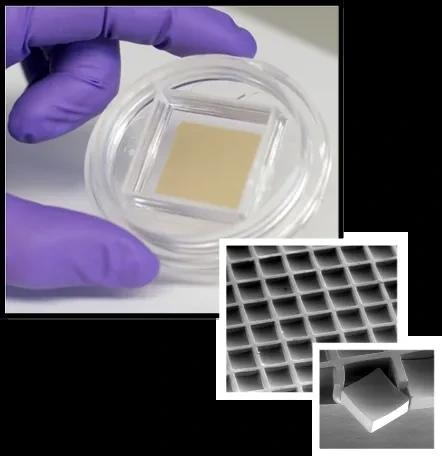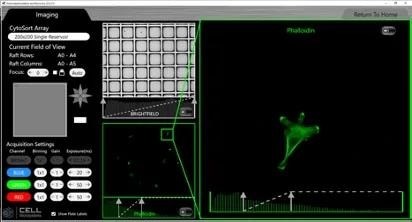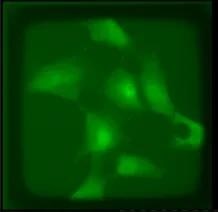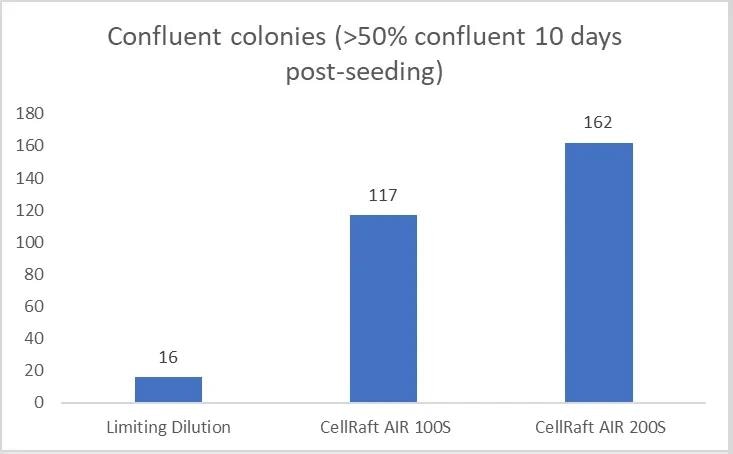The CellRaft Air® System is an integrated platform that uses specialized technology to keep cells in an unperturbed state, resulting in enhanced viability of single cells, highly proliferative colonies, and superior clonal outgrowth. This rapidly increases the number of clones available for downstream applications.
Users can use the system to:
- Obtain 10–50 times more viable monoclonal colonies
- Culture single cells in a flask-like environment, without physically separating them, avoiding perturbation to cell physiology and assuring viability and vitality of single cells as they transform into clones
- Pinpoint cells of interest using robust, label-free brightfield analysis software with user-defined parameters
- Separate CellRafts containing cells or colonies of interest for downstream endpoint analysis or clonal expansion automatically and gently
- To facilitate regulatory submissions by creating a complete image-based record of all clones
Video Credit: Cell Microsystems
Seed cells on CellRaft array
Seeding cells on the CellRaft array is as simple as seeding cells on any regular tissue culture dish. Cells settle into the microwells by gravity after the dilute cell suspension is dispensed into the central reservoir. The CellRaft Arrays are intended to produce many single cells while benefiting from shared media in a flask-like environment to promote viability and monoclonal outgrowth.

Image Credit: Cell Microsystems
Image using CellRaft AIR system
Brightfield and fluorescence scanning can offer single-cell resolution imaging in as short as seven minutes. Because the CellRaft arrays are keyed, they can be scanned throughout the days or weeks required to identify samples of interest without monopolizing the instrument with a single experiment.

Image Credit: Cell Microsystems
Identify cells of interest in software
CellRaft CytometryTM enables image-based validation of single cells to ensure monoclonality and analyze parameters ranging from morphology to gene expression. Users can easily define the target cells’ or colonies’ properties and map them for software-guided CellRaft selection for downstream isolation.

Image Credit: Cell Microsystems
Automated isolation to a 96-well plate
After detection, the CellRafts are delicately dislodged from the CellRaft Array with a release needle and recovered from the array with a magnetic wand for downstream processing. The completely automated CellRaft AIR System separates validated, intact clones for proliferation without dissociation or fluidics in a gentle, dissociation-free manner.

Image Credit: Cell Microsystems
The CellRaft Array’s flask-like culture conditions, along with the automated and gentle isolation of specified cells, colonies, or organoids of interest, result in a higher post-isolation outgrowth percentage than can be achieved with limiting dilution or typical cell sorters and dispensers.

Clonal outgrowth efficiency of CHO-K1 cells in n = 3 96-well plates using limiting dilution and CellRaft AIR with 100s and 200s array formats. Image Credit: Cell Microsystems

iPSCs grown on a CellRaft Array. The CellRaft is isolated on Day 6 into a 96-well plate where the iPSCs continue growing off the CellRaft. Image Credit: Cell Microsystems
Capabilities of the CellRaft AIR system
Applications
- CRISPR gene editing
- Cell line development
- Stem cell culture
- Single-cell genomics
- Organoid development
On-array assays
- Co-culture
- Cell-drug interactions
- Cell-cell interactions
- Cell characterization
Ideal cell types
- Animal or human cells
- Stem cells (including iPSCs)
- Immortalized cells
- Primary cells
- Adherent cells
- Suspension cells
Features
- Bench-top instrument
- Attached computer
- Optional stage-top incubation system
- Includes on-instrument and off-instrument software
- Start-up kits come with CellRaft Arrays and accessories